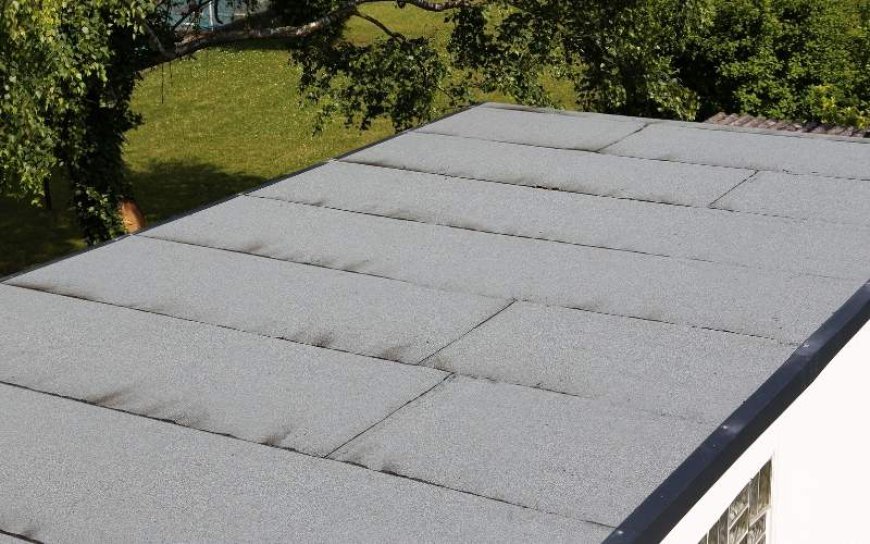The Pros and Cons of Flat Roofs Explained
Flat Roofs: Are They the Right Choice for You?

Flat roofs are a popular choice for many homeowners and commercial buildings, and it’s easy to see why. They offer a sleek, modern look and are often more affordable than pitched roofs. However, they also come with some challenges you should consider before deciding. Whether you’re thinking about a new roofing service or planning a roofing replacement, understanding the pros and cons of flat roofs can help you make the best decision for your property.
What Is a Flat Roof?
A flat roof isn’t completely flat—most have a slight slope to allow water drainage. They are constructed with a waterproof membrane, insulation, and layers of durable material, making them suitable for various climates and building types.
Advantages of Flat Roofs
Flat roofs have several benefits that make them a popular choice:
1. Cost-Effective
One of the biggest advantages of a flat roof is its affordability. Both installation and materials cost less compared to traditional pitched roofs. If you’re planning a roofing replacement on a budget, this might be the best option for you.
2. Easy Maintenance and Repairs
Since flat roofs are easily accessible, it’s much simpler to inspect, clean, or repair them. Regular maintenance like clearing debris or checking for leaks can often be done without professional help, saving you money on roofing services.
3. Space Utilization
A flat roof provides additional usable space. You can turn it into a rooftop garden, a solar panel station, or even an outdoor seating area. For commercial properties, flat roofs are ideal for installing HVAC systems.
4. Modern Aesthetic
Flat roofs give buildings a clean, minimalist look, which appeals to homeowners and business owners aiming for a modern design.
Disadvantages of Flat Roofs
Despite their benefits, flat roofs also come with some drawbacks:
1. Water Drainage Issues
Even with a slight slope, flat roofs don’t drain water as efficiently as pitched roofs. Standing water can lead to leaks, mold, and structural damage over time.
2. Shorter Lifespan
Flat roofs generally have a shorter lifespan compared to sloped roofs. While proper maintenance can extend their durability, they may require more frequent roofing replacements.
3. Limited Weather Resistance
Flat roofs are more vulnerable to extreme weather conditions, such as heavy rain or snow. Ponding water during rainy seasons and accumulated snow in winter can strain the structure.
4. Insulation Challenges
Flat roofs may not insulate as well as pitched roofs. Depending on the material used, they can lead to higher energy bills if your home isn’t properly sealed.
Is a Flat Roof Right for You?
Whether or not a flat roof is the right choice depends on your needs and priorities. If you want a budget-friendly, modern design and don’t mind regular maintenance, a flat roof could work perfectly. However, if you live in an area with heavy rainfall or snow, you might want to consider other options or invest in high-quality materials and waterproofing during the installation process.
Consulting a professional roofing service can help you weigh the pros and cons specific to your location and property.
FAQs
How long does a flat roof last?
The lifespan of a flat roof varies depending on the materials used. On average, they last between 10–20 years with proper maintenance.
Can flat roofs handle heavy rain?
Flat roofs can handle rain, but they require a good drainage system to prevent ponding water, which can lead to leaks or damage.
What is the cost of replacing a flat roof?
The cost of a flat roofing replacement depends on factors like the size, materials, and labor. Flat roofs are generally more affordable than sloped roofs, but the price can range from $5,000 to $15,000 or more.
Conclusion
Flat roofs have unique advantages and disadvantages that make them an interesting choice for homes and businesses alike. While they’re cost-effective, easy to maintain, and great for maximizing space, they do require careful attention to drainage and weatherproofing.
Before making a decision, consult a reliable roofing service to evaluate your options. And if a flat roofing replacement is in your future, invest in high-quality materials and professional installation to ensure long-term durability, learn more here.
